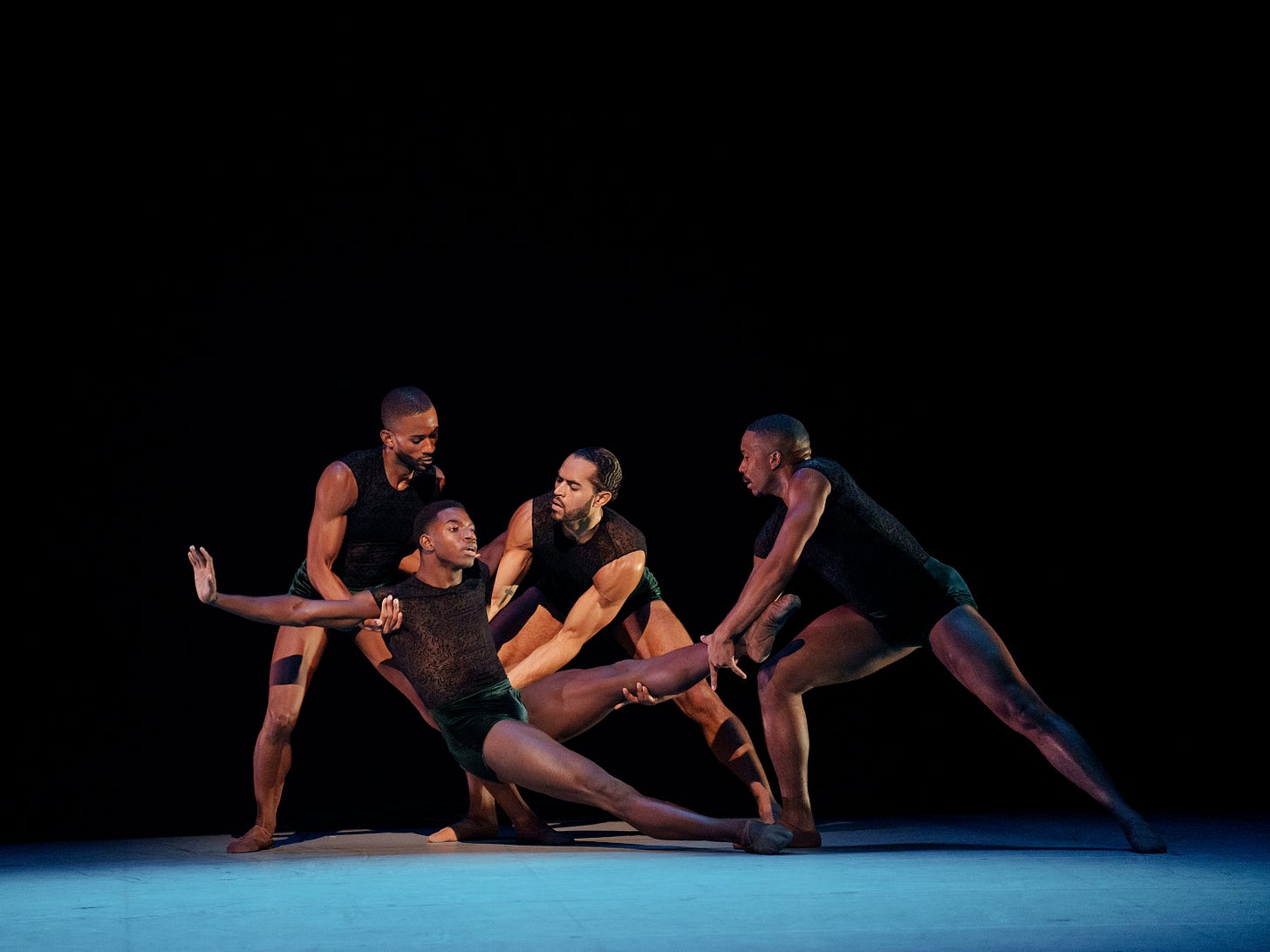Subtle Currents
The Alvin Ailey company performs works by Alonzo King, Ronald K. Brown, and Amy Hall Garner
An image from "Following the Subtle Current Upstream," by Paul Kolnik.
The Alvin Ailey American Dance Theater company has a new leader, Alicia Graf Mack, and hallelujah for that. Mack will be the fourth in an illustrious line, following Ailey, the late Judith Jamison, and Robert Battle. But she doesn’t start until next year—this season is still a product of the ancient régime. Which is just fine. I caught the Dec. 5 show, which included works by Amy Hall Garner, Alonzo King, and Ronald K. Brown. Garner’s “Century,” set to big band jazz by Basie, Ellington and others, is as frenetic and over-amplified as it was at its premiere last year. (And the un-flattering costumes!) It takes all of Alonzo King's zen to quiet the spirit after its rather relentless deployment of steps. In contrast, King’s “Following the Subtle Current Upstream,” set to Miriam Makeba and the sound of storms, and bells, creates a subtle mood. As it begins, three men slide on with linked arms. They bring to mind the three Graces. Their harmony is broken only by the entrance of a fourth, the noble, sinuous and bounding Isaiah Day. Later, accompanied by Makeba’s stirring voice, Ashley Kaylynn Green performs a fierce solo—strong legs tracing circles in the air; this is followed by an extremely sexy pas de deux, all slithers and pulling and hooking of limbs. The ensembles, couched in the hyper-extended, allongé-everything vocabulary that King shares with William Forsythe, are less interesting. And what can one say about Brown’s “Grace,” created back in 1999? Every choreographer could learn from the way Brown brings dancers on and off stage, creating currents and counter-currents, patterns that appear and dissolve so organically they seem somehow preordained. The movement, mostly unisex, draws energy and impetus from the whole body, especially the back and arms—it has texture and depth and turns his dancers into beautiful beings, imbued with a combination of sincerity, cool, and power. At the end, the dancers form a procession. One figure, that of Hannah Alissa Richardson, is like a priestess, tending to her people. When of her flock, Isaiah Day, rages with his arms, legs, and shoulders, she places her hand on his back. You can feel its warming, calming effect. He knows he is good hands, as does the audience.
After Ronald K. Brown’s “Grace”





